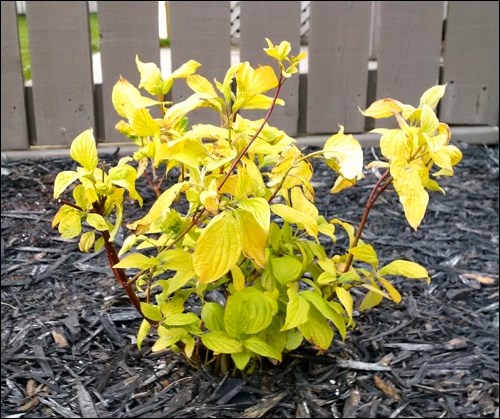Growing up on the West Coast, I thought I knew dogwoods. There we had the Pacific dogwood (Cornus nuttallii), a medium-sized tree with large creamy-white flowers – a great ornamental and British Columbia’s floral emblem. When I moved to the Prairies to study horticulture, I learned about the many ornamental dogwood cultivars (C. alba) with variegated leaves (green and white, white and yellow, green and yellow); solid-coloured leaves (muted yellows, some with red edges; dark green with a purple cast; bright green); coloured stems (bright coral, yellow, purple – brightest colour on young branches in early spring); white or blue berries and most grow to be large two to 2.5 metre tall specimens but a few are dwarfish. These are very dependable and adaptable shrubs that grow in sun to nearly full shade. They prefer moist conditions, but can tolerate some dry periods. They’re not too particular about soil type or pH and they make a great background in the shrub border, especially the lighter coloured leaf types.
During my graduate studies, I grew literally thousands of native red osier dogwoods (C. sericea) in the greenhouse and field – these I got to know well. Generally, red osier dogwood is a large shrub with insignificant white flowers, medium green leaves and muddy green or olive to brown-red stems. It is usually found in moist parkland and mixed grasslands and is useful for reclamation and naturalization. In shelterbelts it slows ground-level winds and catches snow. Use it as a green backdrop or filler on acreages. It is described as a deer-tolerant shrub that you should interpret as — it recovers well after deer have browsed it during fall and winter.
So like I said at the start, I thought I knew dogwoods or at least what was available to me on the Prairies in that category. Then, last weekend, in search for a replacement shrub for some underperforming roses in my garden, I came across a new dogwood cultivar, Neon Burst, a C. alba selection. Developed by Ron Boughen (Boughen Nursery, Valley River, Man.) and introduced by Bylands Nursery just this spring, it has shining bright yellow leaves able to light up the darkest corner. However, it takes full sun unlike some of its ornamental cousins whose leaves may get a bit sunburned under the noonday sun. It is also reported to be heat tolerant, meaning it won’t wilt during the dog days of summer. Following a showy summer, the leaves provide some fall dazzle in tones of purple, red, yellow and orange. And into winter, the bare, glossy, scarlet branches are sure to draw the eye [each spring, remove one-third of the oldest branches to encourage new bright growth for next winter’s display]. Thankfully, Neon Burst does not become a menace by crowding everything out. Compared to other dogwoods, it matures at a modest 1.2 metres tall and wide.
I’m quite excited by my new find. And since it is hardy (zone 2) and has relatively few pests, I’m sure it will find a home in my garden much longer than the ill-fated roses they’ve replaced.
— This column is provided courtesy of the Saskatchewan Perennial Society (www.saskperennial.ca; hortscene@yahoo.com). Check out our Bulletin Board or Calendar for upcoming garden information sessions: Gardening at the U of S workshops (May 30, 31); Swap and Shop – Prairie Water Gardening Society (May 31); U of S Fruit Plant Sale (June 5); Labour and Learn (June 6, 9).



